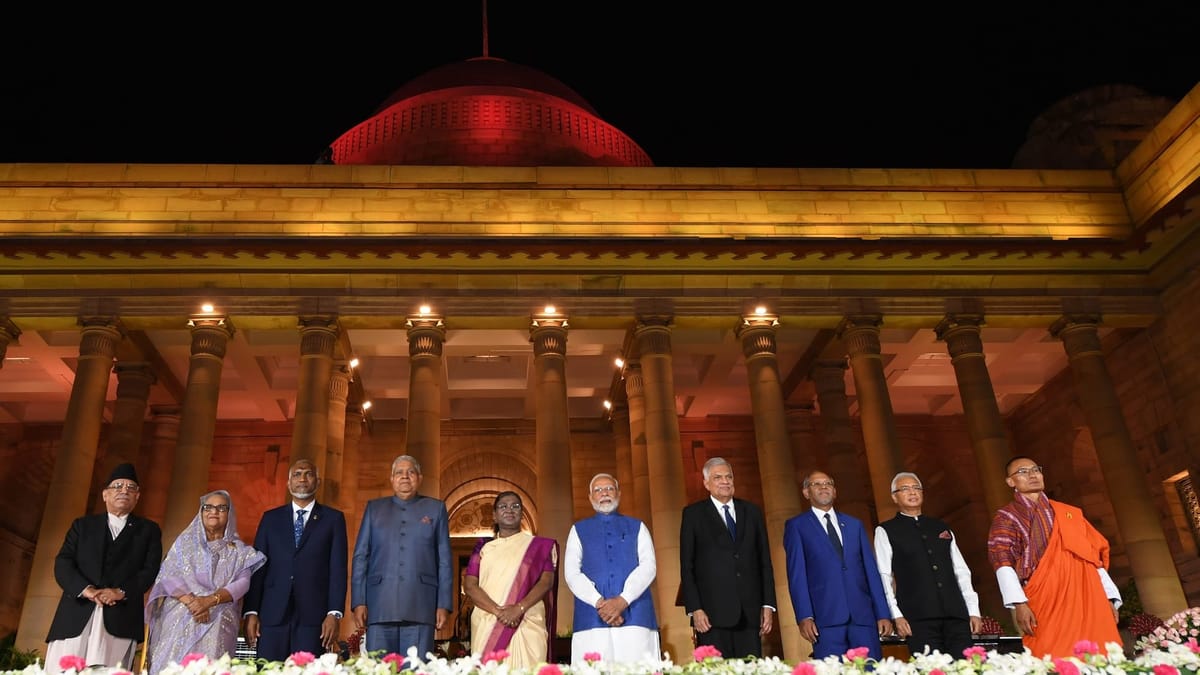
India-Sri Lanka Free Trade Agreement
The India-Sri Lanka Free Trade Agreement (ISFTA) was signed on 28 December 1998, marking Sri Lanka's first bilateral free trade agreement. The ISFTA came into effect on 1 March 2000 and is now fully operational.
Currently, India is looking at concessions on customs duties for automobiles, commercial vehicles, and machinery, under a comprehensive free trade agreement that is still under negotiation. India has also requested simplified visa procedures to facilitate the entry of professionals. Meanwhile, Sri Lanka is pushing for the removal of quotas on its apparel exports to India, as well as duty concessions on tea and certain agricultural products.
Although the existing FTA is limited to goods, the two countries have been negotiating for many years to broaden the scope of the agreement, aiming to transform it into a Comprehensive Economic Partnership Agreement (CEPA) that would include services, investment, and other areas of economic collaboration. Under the current framework, India allows limited imports of garments from Sri Lanka at a 50% tariff concession, up to 8 million pieces annually, provided that 6 million of these garments use Indian fabric. Additionally, India offers a 50% tariff concession on up to 15 million kg of tea from Sri Lanka each year. However, Sri Lanka has placed items such as automobiles and electrical goods on its negative list, restricting their import.
Since ISFTA's implementation, bilateral trade has shown notable growth. India's exports to Sri Lanka increased from $499.3 million in the 2000 to $4.17 billion in 2023-24. Over the same period, imports from Sri Lanka rose from $44.3 million to $1.4 billion.
India's exports to Sri Lanka include petroleum products, cotton, pharmaceuticals, refined sugar, fabric, machinery, pepper, car and motorcycle components, onions, and pulses. India's imports from Sri Lanka include coffee, garments, animal feed, areca nuts, light pepper, rough diamonds, and rubber.
South Asian Free Trade Area
The South Asian Free Trade Area (SAFTA) is the free trade agreement of the South Asian Association for Regional Cooperation (SAARC). SAARC is an economic and political organisation of eight South Asian countries The arrangement came into effect in 2006. The signatories to SAFTA include Afghanistan, Bangladesh, Bhutan, India, the Maldives, Nepal, Pakistan, and Sri Lanka. However, SAARC has largely been dormant in recent years, with no summit taking place since 2016, when India boycotted the planned meeting in Pakistan following the Uri attack. SAFTA has proven largely ineffective due to tensions between India and Pakistan.
India-Bhutan Agreement on Trade, Commerce and Transit
The India-Bhutan Agreement on Trade, Commerce, and Transit, first signed in 1972 and revised in 2016, establishes a free trade regime between the two countries. The Agreement also allows for duty-free transit of Bhutanese exports to third countries. India is Bhutan’s primary trade partner, serving as both the leading source of imports and the main destination for exports.
Since 2014, India's merchandise trade (excluding electricity) with Bhutan has nearly tripled, rising from $484 million in 2014-15 to $1,606 million in 2022-23. This trade accounts for approximately 73% of Bhutan’s overall trade, with the balance of trade favouring India.
India's exports to Bhutan include petrol and diesel, passenger cars, rice, wood charcoal, cellphones, coke and semi-coke, soybean oil, excavators, electric generators and motors, parts for turbines, transport vehicles, and bitumen. India’s imports from Bhutan include ferro-silicon, ferro-silico-manganese, Portland pozzolana cement, dolomite chips, ordinary Portland cement, silicon carbide, cardamoms, betel nuts, oranges, semi-finished products of iron or non-alloy steel, and boulders.
India is also the leading source of foreign direct investment (FDI) in Bhutan, comprising 50% of the country’s total FDI. Approximately 30 Indian companies operate in Bhutan across sectors such as banking, manufacturing, electricity generation, agriculture/food processing, IT-enabled services, pharmaceuticals, hospitality, and education. Notable firms include Punjab National Bank, State Bank of India, Tata Power Company Ltd., General Insurance Corporation, Apollo Educational Infrastructure Services, and Azista Industries.
India-Nepal Treaty of Trade
The India Nepal Treaty of Trade signed on 27 October 2009, provides broad market access for Nepalese exports to India. This treaty has seen automatic renewals, with the most recent extension in November 2023. India remains Nepal's largest trading partner.
According to the Nepal Trade Statistics released by the Department of Customs, Nepal's trade deficit reached $1.79 billion by mid-September for 2024-25. The country has a trade deficit with over 100 of the 145 countries with which it maintains trade relations. Nepal's trade imbalance with India stands at $1.08 billion.
Nepal’s exports to India include hydroelectric power, resin, agricultural produce, yarn, pashmina shawls, hides and skins, handicrafts, and precious metals such as silver and gold jewellery. Nepal’s imports include petroleum products, chemical fertilisers, salt, sugar, rice, vehicles, copper, and cotton.
In July 2024, exports from India to Nepal included petroleum products, iron and steel, non-basmati rice, industrial machinery for dairy, and drug formulations and biologicals. Nepal's imports from India during the same period included spices, vegetable oils, iron and steel, manmade yarn, fabrics, and miscellaneous processed items.

